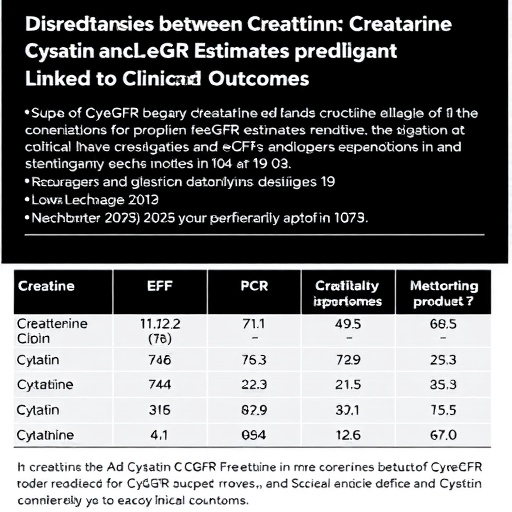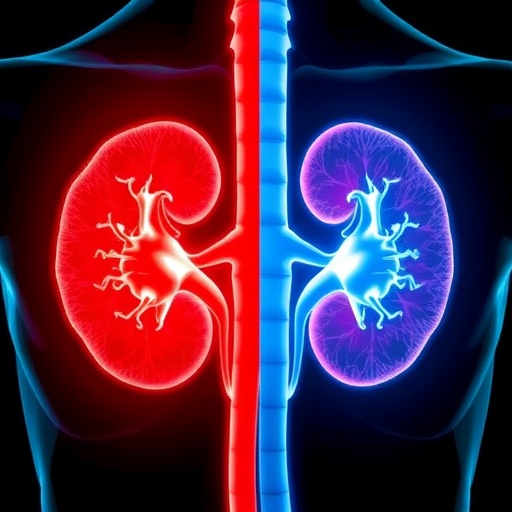In a groundbreaking study published in the American Journal of Clinical Nutrition, researchers at the University of Illinois Urbana-Champaign have unveiled compelling evidence that not all high-protein animal foods equally enhance muscle growth following weight training. Contrary to common belief that fattier, nutrient-rich meats universally promote superior muscle-protein synthesis, this new research indicates that the fat content and processing of meat may substantially alter its muscle-building efficacy. The findings challenge prevailing notions about dietary strategies aimed at optimizing post-exercise muscle repair and growth in physically active adults.
The study’s lead investigator, Professor Nicholas Burd, along with graduate student Žan Zupančič, meticulously designed a randomized controlled trial to probe how variations in fat content within pork patties affect the acute muscle-protein synthetic response after resistance exercise. Sixteen young, physically active participants were recruited and subjected to weight-training protocols involving leg presses and leg extensions. Participants consumed either a high-fat pork burger, a lean pork burger, or a carbohydrate-based sports drink immediately following exercise. Through advanced tracer methodologies utilizing isotope-labeled amino acids, the team quantitatively measured the incorporation of dietary protein into muscle tissue in real-time.
This innovative approach involved participants receiving continuous infusions of these labeled amino acids, allowing precise tracking of how quickly and effectively dietary amino acids were utilized for muscle protein synthesis. Blood draws collected throughout the experimental protocols provided additional insight into circulating amino acid concentrations, correlating dietary intake with systemic availability. Muscle biopsies taken before and five hours after feeding provided direct evidence of protein synthetic rates within the muscle’s myofibrillar fraction, the contractile proteins most associated with muscle strength and hypertrophy.
Results from the study defied expectations established by Burd’s earlier work, where consumption of whole eggs or salmon — both higher in fat content — enhanced muscle-protein synthesis rates compared to their leaner or processed counterparts. Contrary to these trends, in this latest investigation, lean pork consumption elicited a notably higher plasma amino acid response and greater muscle-protein synthetic rate than the high-fat pork variant. Surprisingly, muscle-protein synthesis in participants who consumed the fat-rich pork patties was nearly equivalent to levels observed after carbohydrate ingestion alone, suggesting a blunting effect of the lipid-rich matrix on muscle anabolic signaling.
One critical factor influencing these outcomes appears to be the processing method of the meat. Unlike whole steaks or fillets, the ground pork patties—comprising a mixture of lean and fatty cuts—may alter digestion kinetics and amino acid absorption rates, thereby modulating muscle protein synthesis signaling pathways. According to Burd, “the grinding and combining of differing fat ratios may influence the digestion speed and amino acid appearance in circulation, impacting the anabolic response despite equal protein content.” The study’s meticulous preparation phase, sourcing all meat from a single pig and validating nutrient composition in dedicated laboratories, underscores the rigor applied to controlling confounding variables.
Mechanistically, muscle-protein synthesis after exercise is highly responsive to both the availability of essential amino acids—particularly leucine—and the presence of exercise-induced anabolic signaling. The sharply higher amino acid concentrations observed after lean pork feeding signify a more rapid or efficient release of muscle-building substrates compared to the high-fat burger. This enhanced aminoacidemia likely activates the mammalian target of rapamycin complex 1 (mTORC1) pathway more robustly, accelerating translation initiation and protein accretion. Conversely, the slower or diminished amino acid appearance following high-fat meat ingestion may lag behind anabolic signals, resulting in suboptimal muscle repair.
Furthermore, the fat content in whole foods such as eggs and salmon, revealed in earlier research, may have unique bioactive properties or act synergistically with protein to augment muscle protein synthesis. However, this relationship does not extend universally to all lipid-rich meats, as the current findings delineate stark differences in how fatty pork influences anabolic outcomes compared to previously studied foods. This nuance highlights the complexity of nutritional biochemistry in exercise recovery and dispels oversimplified dietary dogma.
This research carries significant practical implications for athletes, fitness enthusiasts, and clinical populations seeking to maximize muscle hypertrophy and repair through dietary interventions. It advises caution in assuming that adding more fat to protein-rich meals will invariably enhance muscle-building potential, particularly when the protein source undergoes industrial processing. Lean, minimally processed meats may offer a superior anabolic stimulus post-exercise, amplifying the gains induced by weight training.
At the core of this emerging understanding is the affirmation that resistance exercise remains the paramount driver of muscle protein synthesis. Nutrition functions as an adjunct factor, fine-tuning the magnitude of muscle anabolism rather than acting as the primary stimulus. As Burd emphasizes, “Exercise initiates the intrinsic anabolic program; our role with nutrition is to optimize the available substrate to support that process.” The call to prioritize whole, unprocessed foods post-workout aligns with this holistic view and encourages a shift away from relying solely on macronutrient quantity towards considering food matrix interactions.
In addition to novel physiological insights, this study sets a precedent for future investigations exploring the interplay of food processing, macronutrient composition, and muscle metabolism. As consumer trends and the food industry evolve with increasing emphasis on convenience and processed products, understanding how these factors impact human health and performance gains critical importance. This comprehensive research approach, combining state-of-the-art tracer methodologies with tightly controlled feeding interventions, offers a model for subsequent studies targeting precision nutrition strategies.
The funding for this study was graciously provided by the National Pork Board’s Pork Checkoff program without influence on study design or data interpretation, ensuring scientific integrity. The findings reported herein provide a valuable resource for regulatory bodies, health professionals, and the broader public aiming to formulate evidence-based dietary recommendations aligned with optimal physical performance.
In conclusion, the University of Illinois research team has provided resounding evidence that the anabolic response to post-exercise protein ingestion is influenced not just by protein content but by the fat composition and processing of the source food. Lean pork, when consumed as a whole food following resistance exercise, induces superior muscle-protein synthesis compared to a fatty ground pork matrix, challenging assumptions about dietary fat’s universal benefit in this context. As exercise science continues to evolve, such studies illuminate the intricate biological tapestry underlying muscle growth, guiding nuanced, targeted nutritional interventions for peak athletic and health outcomes.
Subject of Research: People
Article Title: Ingestion of a lipid-rich meat matrix blunts the post-exercise increase of myofibrillar protein synthesis rates in healthy adults: A randomized controlled trial
News Publication Date: 7-Sep-2025
Web References:
https://www.sciencedirect.com/science/article/pii/S0002916525005179?via%3Dihub
References:
DOI: 10.1016/j.ajcnut.2025.09.001
Image Credits: Photo by Fred Zwicky
Keywords: muscle-protein synthesis, whole foods, lipid-rich meat, lean pork, exercise recovery, resistance training, amino acid kinetics, muscle hypertrophy, protein digestion, nutritional biochemistry, food processing, anabolic response




